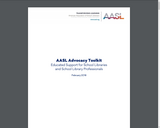
Annotated list of resources to help stakeholders understand the important role of school libraries.
- Subject:
- Information and Technology Literacy
- Material Type:
- Reference Material
- Author:
- AASL
- Date Added:
- 01/09/2019

Annotated list of resources to help stakeholders understand the important role of school libraries.
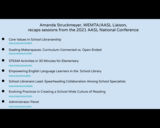
Amanda Struckmeyer, WEMTA/AASL Liaison, recaps sessions from the 2021 AASL National Conference in short screencasts.

Explore the newest resources published by a team of school librarians with other librarians in mind; Developing Inquisitive Learners, Critical Thinkers, and Resourceful Citizens'

Presentation given at the WEMTA 2024 annual conference. Whether you are a member of AASL or not, you have access to resources and connections to support your library program and grow your profession. This presentation provides an overview of AASL offerings and resources.
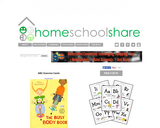
www.homeschoolshares.com offers a great free downloadable link to ABC exercise cards.
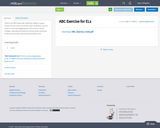
CESA #1 EL OER Project
ABC EXERCISE CARDS is a great resource for ELs and it can teach a new vocabulary ( such as verbs) in a fun and engaging way. This resource uses EL strategy : total physical response and the whole classroom could do this activity.
www.homeschoolshare.com

Students rotate through a circuit of ABC posters every 3-8 minutes, generating words or phrases for each letter of the alphabet related to the topic provided.
This teaching strategy/activity can be used as an introduction to a lesson or as an evaluation/assessment.
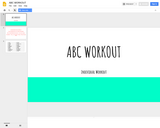
Alphabet Workout
We used first and last names. Every letter is an activity. You could spell answers to review questions, random questions, or vocab words. Possibilities are endless! Work individually or as a group. Make it fit for your curriculum and environment.

Assignment can be used to assess understanding of investing concepts. Students use both knowledge and creativity to design a slide show of terms that relate to investing. *See Resource Library for attachments (rubric and student example).

ABCs of a School Meeting is a self-paced training for educators and families which covers:
Why family involvement matters
Types of school meetings
How to prepare
The importance of effective communication
Techniques to build partnership with your child’s team
The goal of the training is to enable families, teachers and students to have knowledge of the different kinds of school meetings related to disabilities. The takeaway is to look for the best ways to expand communication and build a team with the school and family to support the student with disabilities.
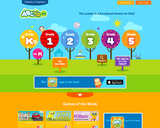
This site is great for elementary students to use to reinforce their keyboarding skills with easy-to-play keyboarding games.
Site can be used for free as an individual or on a fee basis for a family/class plan providing the ability to monitor participation.
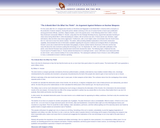
For four years after the U.S. dropped atom bombs on Hiroshima and Nagasaki to end World War II, America held a monopoly on the production of atomic weapons. During this period, debate centering on the use of nuclear bombs in future wars proliferated among government officials, scientists, religious leaders, and in the popular press. In the following article from Collier's, former Navy lieutenant commander William H. Hessler, using data from the Strategic Bombing Survey, argued that saturation bombing of urban areas during World War II, while devastating for civilians, did not achieve war aims. A future atomic war, therefore, might well destroy cities but fail to stop enemy aggression. Furthermore, with a much higher urban concentration than the Soviet Union, the U.S. had more to lose from atomic warfare. The article, while providing detailed explanations of the bomb's destructive capability, demonstrated the lack of information available regarding the long-term medical and ecological effects of radioactivity. Hessler's prose also evoked both the fascination that gadgetry of atomic warfare held for Americans of the time and the fear many felt about the risks involved in putting this technology to use. On September 24, 1949, one week after publication of this article, news that the Russians had conducted atom bomb tests shocked the nation. The following April, a National Security Council report to President Harry S. Truman advised development of a hydrogen bomb--some 1,000 times more destructive than an atom bomb--and a massive buildup of non-nuclear defenses. The subsequent outbreak of war in Korea in June 1950 justified to many a substantial increase in defense spending.
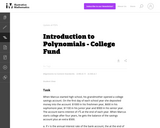
This is a task from the Illustrative Mathematics website that is one part of a complete illustration of the standard to which it is aligned. Each task has at least one solution and some commentary that addresses important asects of the task and its potential use. Here are the first few lines of the commentary for this task: When Marcus started high school, his grandmother opened a college savings account. On the first day of each school year she deposited money into the ac...

The given solutions for this task involve the creation and solving of a system of two equations and two unknowns, with the caveat that the context of the problem implies that we are interested only in non-negative integer solutions. Indeed, in the first solution, we must also restrict our attention to the case that one of the variables is further even.
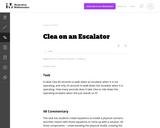
This is a task from the Illustrative Mathematics website that is one part of a complete illustration of the standard to which it is aligned. Each task has at least one solution and some commentary that addresses important asects of the task and its potential use. Here are the first few lines of the commentary for this task: It takes Clea 60 seconds to walk down an escalator when it is not operating, and only 24 seconds to walk down the escalator when it is operating. How m...

This is a task from the Illustrative Mathematics website that is one part of a complete illustration of the standard to which it is aligned. Each task has at least one solution and some commentary that addresses important asects of the task and its potential use. Here are the first few lines of the commentary for this task: Sara's doctor tells her she needs between 400 and 800 milligrams of folate per day, with part coming from her diet and part coming from a multi-vitamin...
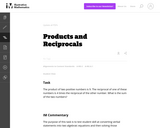
This is a task from the Illustrative Mathematics website that is one part of a complete illustration of the standard to which it is aligned. Each task has at least one solution and some commentary that addresses important asects of the task and its potential use. Here are the first few lines of the commentary for this task: The product of two positive numbers is 9. The reciprocal of one of these numbers is 4 times the reciprocal of the other number. What is the sum of the ...
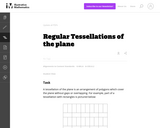
This task examines the ways in which the plane can be covered by regular polygons in a very strict arrangement called a regular tessellation. These tessellations are studied here using algebra, which enters the picture via the formula for the measure of the interior angles of a regular polygon (which should therefore be introduced or reviewed before beginning the task). The goal of the task is to use algebra in order to understand which tessellations of the plane with regular polygons are possible.
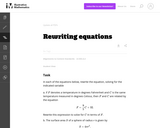
This is a task from the Illustrative Mathematics website that is one part of a complete illustration of the standard to which it is aligned. Each task has at least one solution and some commentary that addresses important asects of the task and its potential use. Here are the first few lines of the commentary for this task: In each of the equations below, rewrite the equation, solving for the indicated variable If $F$ denotes a temperature in degrees Fahrenheit and $C$ is ...
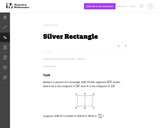
This is a task from the Illustrative Mathematics website that is one part of a complete illustration of the standard to which it is aligned. Each task has at least one solution and some commentary that addresses important asects of the task and its potential use. Here are the first few lines of the commentary for this task: Below is a picture of a rectangle $ABCD$ with segment $\overline{MN}$ drawn where $M$ is the midpoint of $\overline{BC}$ and $N$ is the midpoint of $\o...